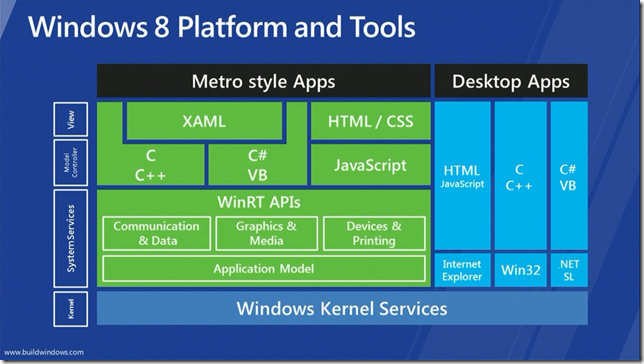Windows 8
Windows 8, with its adoption of HTML5 and the new WinRT API, introduced a lot of fear and uncertainty among .NET software developers. From the outside it looked like MS was throwing .NET and particularly Silverlight developers under the bus.
There's an argument to be made that Windows 8 is more about Microsoft chasing the consumer dollar than the enterprise dollar, with HTML5 as the development tool flavor of the month. And there are reasonable doubts about how rich an app you can really build with HTML5 (keeping in mind that for a really rich user experience you're probably still going to need a helping of Javascript).
But what's all this about the new APIs?
David Burela posted the following graphic of the Windows 8 architecture in his blog post BUILD keynote day 1–Metro experience with Jupiter, XAML and HTML5/JS.
As the graphic shows, you can still write desktop apps in Windows 8, even Win32 apps. And of course .NET is still there. All the new stuff is in support of "Metro style apps", and Metro is the UI design language Microsoft created for Windows Phone 7.
Interestingly, the graphic indicates that XAML, the core presentation technology behind WPF and Silverlight, is no longer restricted to .NET but is available to C and C++. (There's also an article on MSDN on how to do interop between Win32 and WPF.)
Check out the WinRT API documentation.
